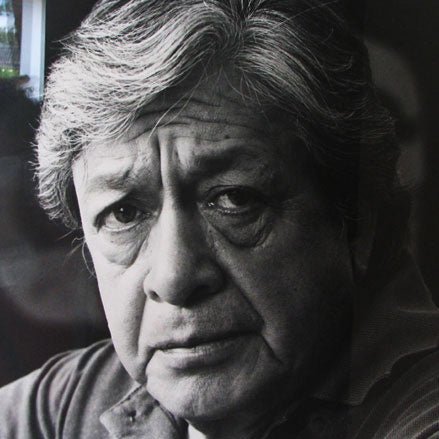Oswaldo Guayasamín is considered as the most important twentieth century Ecuadorian artist. His recognition has crossed borders because through his work he has strongly denounced the injustices suffered by indigenous peoples in Latin America.
Guayasamín was born on July 6, 1919 in a humble family residing in Quito. Despite not having the support of his parents, he applied at the University of Fine Arts in Quito in 1932. During this time the War of the four days occurs, a civil war due to the economic and political crisis suffered at the moment that tainted the streets of Quito with blood. This would deeply mark Oswaldo Guayasamín and therefore his work. In 1941 the artist obtained his degree being the best student in his course.
His first exposure caused a greater uproar in 1942 for his harsh social criticism. Nelson Rockefeller, impressed by the work of Guayasamín, buys several paintings at the exhibition. This fact resulted in fame for the artist.
During the later years Oswaldo Guayasamín travels to the United States, Mexico, Peru, Chile, Argentina and Brazil. The general perception that the artist gets of his experience living in these countries of Latin America is that the Indian community is exploited and oppressed. Due to his indigenous roots Guayasamín feels identified with these people and since then decides to fight this social situation of injustice through his work.
Many awards have been given to Guayasamín’s work, such as the Grand Prix at the Biennial of Spain in 1952, and later the Grand Prix at the Biennial of Sao Paulo. He was appointed president of the Ecuadorian House of Culture in 1971, member of the Royal Academy of Fine Arts of San Fernando in Spain in 1978 and member of the Academy of Fine Arts in Italy in 1979.
During his life this artist held about 50 solo exhibitions and his work can be seen in many museums and galleries around the world. We can also find his large murals in public buildings in cities like Madrid (Adolfo Suárez Airport), Paris (UNESCO Headquarters) and Sao Paulo (Latin American Parliament), to name a few.
His international fame allowed him to meet various personalities from the world of politics and culture, some of whom would become close friends as Pablo Neruda, Gabriel Garcia-Marquez or the Castro brothers.
He died in 1999 in Baltimore, United States.
